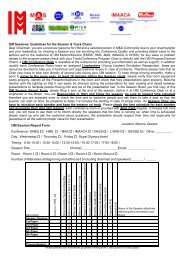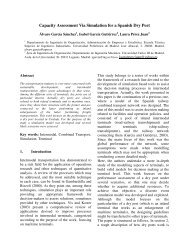System-of-Systems Engineering - Liophant Simulation
System-of-Systems Engineering - Liophant Simulation
System-of-Systems Engineering - Liophant Simulation
You also want an ePaper? Increase the reach of your titles
YUMPU automatically turns print PDFs into web optimized ePapers that Google loves.
Surrogate ModelsWhy do we use surrogate models?• Statistical analysis <strong>of</strong> contributing factors, includinginteractions and high order effects• Closed-form mathematical characterization <strong>of</strong> “blackbox”• Dynamic / interactive visualization <strong>of</strong> model space• Computer evaluation time is multiple orders <strong>of</strong>magnitude less than legacy “black box” codes,enables Monte Carlo simulations and probabilisticanalysis• Share model <strong>of</strong> systemic behavior without sharingsensitive tools and models.Training data setV&V data setError checkingComputer model / Legacy code / Black boxWhat do we need to create surrogate models?• A carefully selected data set for regression or“training”, may imply a significant allocation <strong>of</strong>resources (Design <strong>of</strong> Experiments)• A sufficiently broad data set for Validation &Verification (V&V) through and error checkingSecure sharingDeveloping Methods and Techniques for <strong>System</strong> <strong>of</strong> <strong>System</strong>s <strong>Engineering</strong>Dr. Dimitri Mavris, dimitri.mavris@ae.gatech.edu41
















